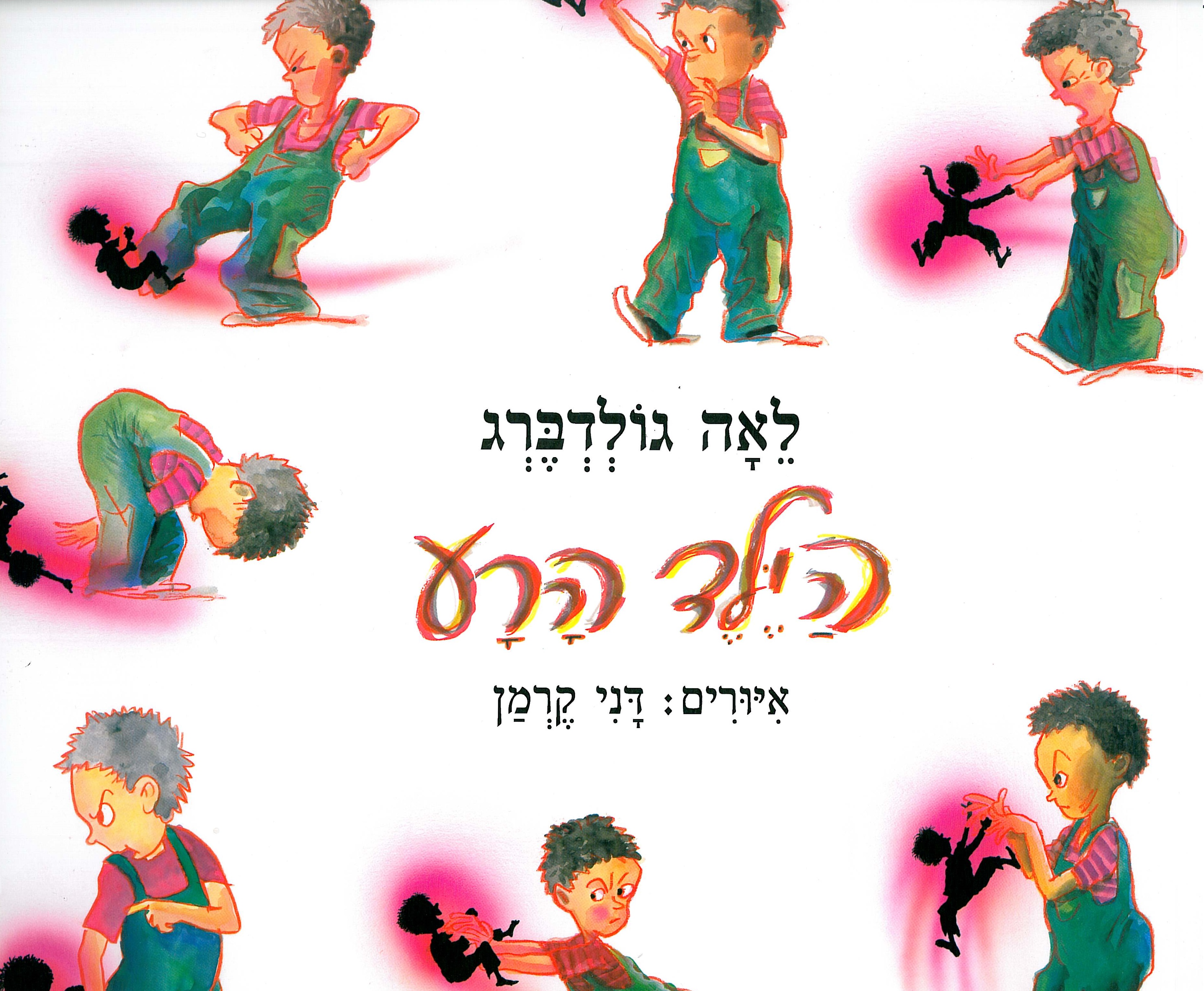הילד הרע לאה גולדברג
תרגום לרוסית של ההצעות להורים המודפסות בעמודים הראשונים של הספר
Гадкий мальчишка
Лея Гольдберг
Дорогие родители,
Гад изо всех сил старается быть вежливым ребенком и соответствовать требованиям взрослых, но в самую непредсказуемую минуту он ведет себя не так, как следует, ругается и дерется. Взрослые разочарованы его поведением и ругают его, а Гад пытается объяснить, почему он себя повел именно так, но чувствует, что никто его не понимает. Книжка описывает плохое поведение, которое вначале представляется неуправляемым. В конце рассказа Гад чувствует, что «гадкий мальчишка» - это часть его самого. Он старается его прогнать и просит больше не мешать ему.
«Гадкий мальчишка» - это стихотворение – рассказ, которое Лея Гольдберг написала более пятидесяти лет тому назад. Сегодня не принято навешивать детям такие бирки, как «плохой ребенок», чаще указывают ребенку, что его поведение или поступки неприемлемы, неправильны, могут задеть или обидеть других людей и т.п.
Лея Гольдберг (1911 – 1970) родилась в Ковно, в Литве. Она была поэтессой, писательницей, переводчицей. Высшее образование получила в Берлине и в Бонне. Когда ей было 22 года, она получила степень доктора, специалиста по семитским языкам. Через два года после этого, в 1935 году, репатриировалась в Израиль и стала известной поэтессой. Редактировала и писала детские книги, среди них такие, как «Сдается квартира», «Где Плуто?» и многие другие, которые стали золотым фондом израильской литературы, заведовала кафедрой сравнительного литературоведения в Еврейском Университете в Иерусалиме. В 1970 году получила приз Израиля в области литературы, но, к сожалению, скончалась за два месяца до его вручения, и приз был вручен ее матери.
Кто силен?
В еврейской традиции есть много выражений и правил, относящихся к подобающему поведению. Всем нам иногда трудно управлять собой, и мы не всегда знаем, как нужно себя вести. В Мишне говорится: «Кто силен? Тот, кто обуздывает свои страсти» (Трактат Авот, глава 4, первая мишна). Значение слова «обуздывает» - «покоряет», и мудрецы рассказывают о двух разных группах
«покорителей»: о сильных людях, которые могут вести войну и покорять города, и о сильных людях, которые могут покорять свои дурные наклонности. Мудрецы, составившие Мишну,
утверждали, что именно тот, кто способен обуздывать свои страсти и управлять своим поведением, по-настоящему силен.
Владение собой – это трудная задача как для взрослых, так и для детей. Маленькие дети учатся преодолевать порыв ударить или обидеть. Как вы думаете, как чувствует себя ребенок, который сумел сдержаться и не совершить плохой поступок?
Занятия в кругу семьи:
- Гад чувствует, что внутри него сидит «гадкий мальчишка», который вредит и мешает ему. Обсудите, действительно ли внутри него сидит «гадкий мальчишка»? Кто обзывает тетю и толкает Йохевед: Гад, «гадкий мальчишка» или они оба? Где находится «гадкий мальчишка», когда Гад не злится? Что вы об этом думаете?
- Иллюстратор Дани Керман решил нарисовать «гадкого мальчишку» как маленькую тень Гада. Рассмотрите их обоих. Что делает «гадкий мальчишка», когда кто-либо сердится на Гада?
Выберите одну из иллюстраций и придумайте «беседу теней» с помощью двух рук – двух героев: направьте на стену свет сильной лампы или фонаря. Один из вас покажет движениями рук
«гадкого мальчишку», а другой будет отвечать ему от имени Гада.
- Взрослые сердятся на Гада: папа говорит, что он ведет себя как маленький, мама Йохевед называет его «дикарем», а бабушка так сердится, что даже нос у нее позеленел. Что вы думаете о поведении взрослых, когда они говорят с Гадом?
Поговорите с вашими детьми о каком-либо случае, когда вы не сумели преодолеть злость. Что можно сделать, чтобы ее преодолеть? Как справиться с последствиями злости, если она уже прорвалась наружу?
- Гад рассказывает: «Я уже все пробовал, чтобы прогнать «гадкого мальчишку». В книжке есть семь иллюстраций, которые показывают попытки Гада справиться с «гадким мальчишкой».
Рассмотрите их и постарайтесь понять, как он это делает.
- Гад спрашивает: «Что с ним сделать, с этим «гадким мальчишкой»? Так же, как у Гада, у каждого из нас есть наклонности и поведение, которыми мы не можем гордиться. Предложите вашим детям выбрать какую либо черту своего характера, которую они хотели бы исправить и вследствие этого превратиться в героя или героиню. Придумайте какой-нибудь «символ героизма» (например, медаль, корону, наклейку и т.п.), который получит герой, и награждайте им ваших детей, когда они сдерживаются и ведут себя как большие.
- «Гадкий мальчишка» иногда вредит Гаду, но есть у него и хорошие черты: например,
смелость, самостоятельность и воля. Удивительно, но он даже умеет танцевать! На внутренней обложке есть целая серия портретов «гадкого мальчишки». Когда мы рассматриваем их все один за другим, кажется, что мальчик превращает свою злость в танец. Приглашаем вас потанцевать вместе с ним. Выберите несколько движений, из которых ваши дети могут сочинить и представить маленький танец. Его можно сопроводить пением или барабанным боем.
Желаем вам приятного чтения и интересной беседы!





